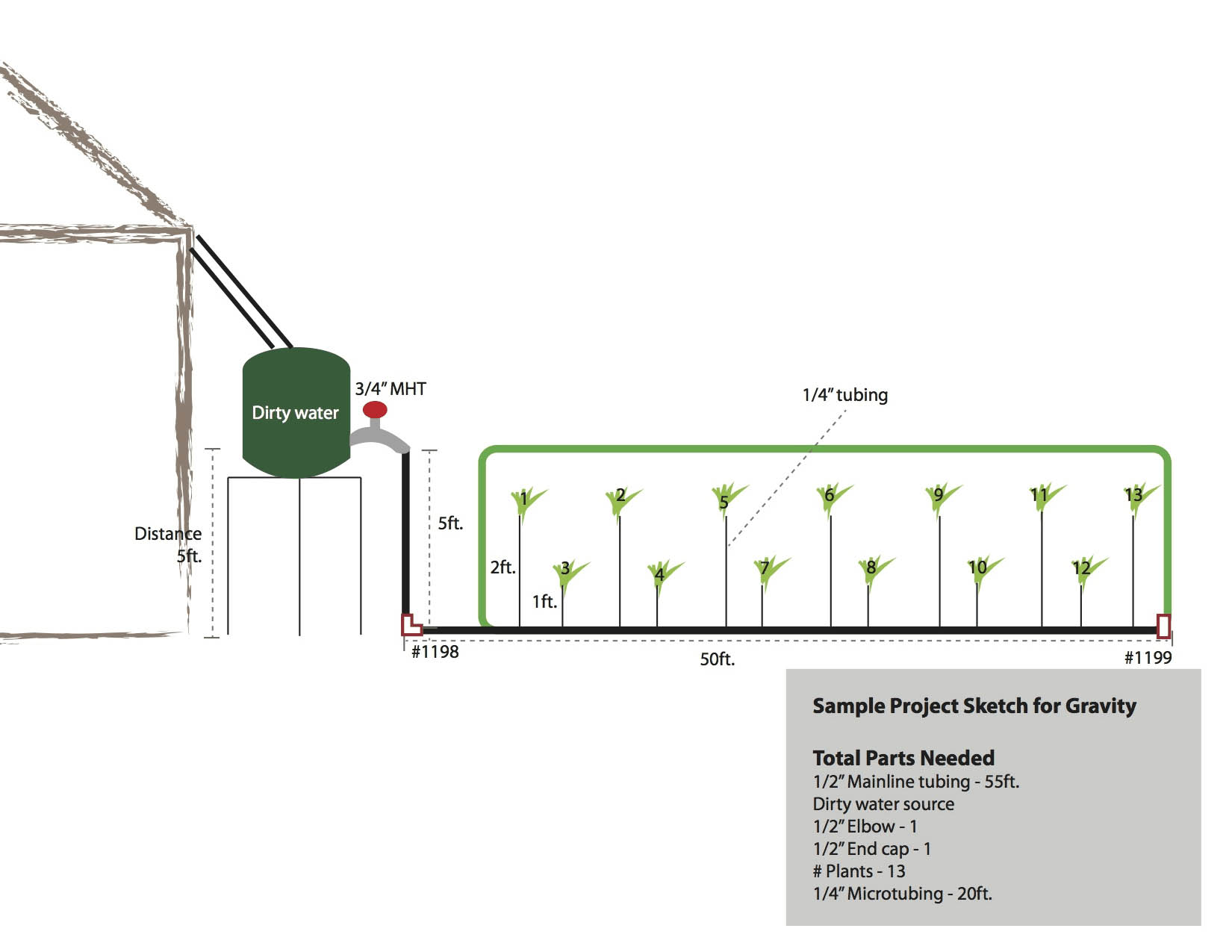Gravity Drip Irrigation
Step 1: Gather Information
- What is your water source?
Any water sources that comes from ponds, rain water or open water catchment tanks, or your water is from a municipal water supply, you will choose the different kinds of filters.
- How many plants do you wish to water?
Make sure the number of drippers so having an idea of how many plants.
- Does your water source have an outlet with 3/4” male hose threads (MHT)?
- How much mainline tubing will you need?
It is best answered by drawing out the path of your mainline tubing in a sketch. Once the lay-out is known measuring the distance the mainline tubing will cover is recommended.
- How much 1/4” micro tubing will you need?
Once you know how much mainline tubing you will need, you will need to approximate how much micro tubing will be needed. If your mainline tubing comes close to the plant you wish to water then you can insert the emitter directly into the mainline tubing. If your mainline tubing is too far from the plant you wish to water, then you will need to use a micro tubing feeder line to bring the emitter close enough to the plant’s root zone. At each spot that you will place a watering device note how much micro tubing you may need to reach your final destination from your mainline. Write down the value for every spot you wish to place a watering device. Then add up each value and this will give you a great idea of how much micro tubing you may need.
- Will you need to go in two different directions from the water source or at any other place in your layout?
You will need a Tee fitting for every spot that requires the mainline tubing to go in two different directions. Write down how many times you need to Tee your mainline tubing.
7.How many places does your mainline tubing come to an end?
Each end of a run of tubing needs an end cap. Write down how many end caps you will need in your system.
- Will you need to make any 90 degree turns?
Mainline tubing will kink on corners, so every turn must have an elbow fitting. Again write down how many elbow fittings you may need.
Step 2: Creating a sketch
We recommend creating a sketch of your project area. We have found that a sketch helps to visualize the area and ensures that you have not overlooked any detail.
Step 3: Using your information to choose the right kit




